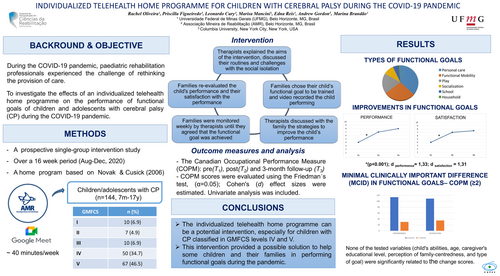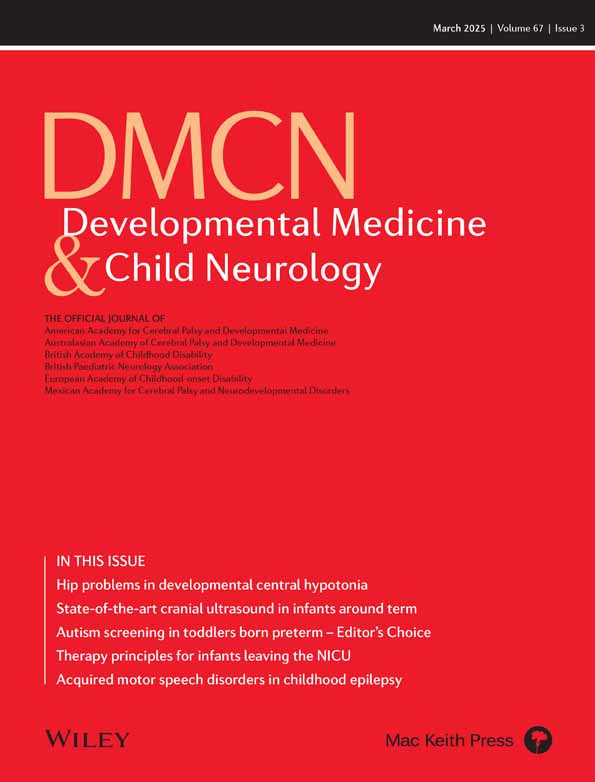Individualized telehealth home programme for children with cerebral palsy during the COVID-19 pandemic
Abstract
Aim
To analyse the effects of an individualized telehealth home programme on the performance of functional goals of children and adolescents with cerebral palsy (CP) during the COVID-19 pandemic.
Method
A prospective single-group intervention study with children/adolescents with CP (n = 144; median age = 92 months [Q1 = 44.0, Q3 = 148.8]; 74 males, 70 females), representing all Gross Motor Function Classification System (GMFCS) levels participated in a 4-month home programme in Brazil. An interdisciplinary team encouraged families to choose a functional goal to be trained. The Canadian Occupational Performance Measure (COPM) was used at pre-intervention (T1), post-intervention (T2), and 3-month follow-up (T3). The differences in COPM scores at T1, T2, and T3 were evaluated using Friedman's test. The effect size was calculated using Cohen's d. Univariate analysis was included.
Results
Significant improvements were observed after the intervention, with maintenance of scores after 3 months (p < 0.001, dperformance = 1.33; dsatisfaction = 1.31). None of the tested variables (child's abilities, age, caregiver's educational level, perception of family-centredness, and type of goal) were significantly related to the change scores.
Interpretation
The individualized remote telehealth home programme can be a potential intervention, especially for children with CP classified in GMFCS levels IV and V. Also, this intervention provided a possible solution to help some children and their families in performing prioritized functional goals during the pandemic period.
Graphical Abstract
Portuguese translation of this Original Article is available in the online issue.
Open Research
DATA AVAILABILITY STATEMENT
Data available on request due to privacy/ethical restrictions.





